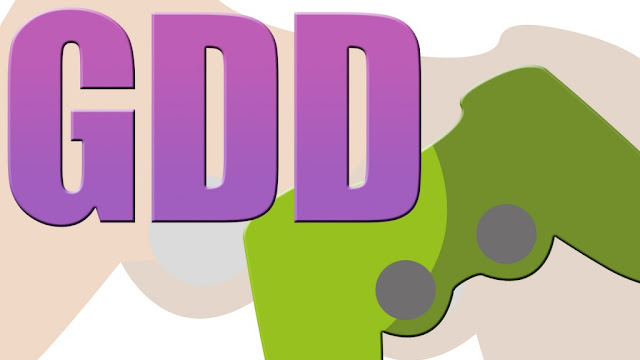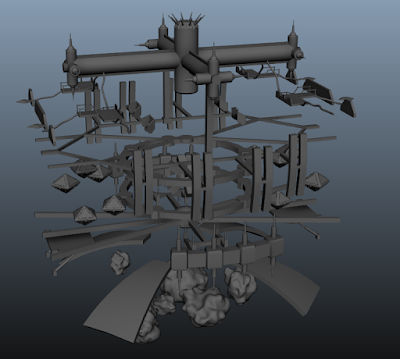Reading 3
Today I have finished my reading task for week 3.Before I started looking for articles and writing about them.As I was recommended I decided to change my topic from Genre-Game Adventures to Level Design Process because I couldn't find enough of relevant information and articles to fill all the work provided for this task.Overall I am happy with my choice and I think I did a good job learning and finding interesting and relevant information for my current topic which is Level design process.On this task I spent around 4 to 5 hours because I wasn't sure how to start and how to write my overview in a relevant academic form but once I finished 2 academic papers it was kinda a bit more easier to work on the two that I hd left to do.I it was a lot easier to find relevant information while going trough the papers I guess everything just comes with experience and also the time that has been spent on it.
Level Design Process and Experience
By Christopher W.Totten
I found this book with a series of academic assays about Level design process this book is very interesting and it provides a lot of level “design methods between sectors of industry” and also a lot of practical information and design philosophies. This series of assays can be very beneficial to students that are learning level design software it provides a lot of evidence that would be really helpful new developers to start making their own games with expert view and some of their guidelines. The goal of this book is to provide level design from four different ways. For example Experiencing level, Designing Levels, Constructing levels, and Testing levels.
Experiencing Level-creates a bridge into the next section on planning levels.
Designing Levels-“development of strongly mechanically levels that are tested trough several iterations trough case studies.”
Constructing Levels-for constructing levels the method is to incorporate art and sound assets to expand palayers freedom in game world.
Testing Levels-great level design appears from testing and testing and making changes each time in order to achieve perfection.
This series of assays is also great in terms of that it has many game creators and people that are working in industry sharing and explaining their view on each of the sections above. There is 16 chapters overall and they are written by different authors which makes this academic paper very informative and full of information. Each of the chapters has something unique which I though is very interesting in the way that you read I learn something different from each game creator that has shared his or her experience on the topic of game design processes and things involved in it.
The Digital Gaming Handbook edited by Roberto Dillon
The assay talks about Robert Yang and his approach to level design
Designer Robert Yang has extensive work on level design, and he theorized connection with architectural design. His scholarship is often presented in the yearly “Level Design workshop at the Game Developers Conference (GDC)”. Architecture is one of the big and very useful things in creation game design and level design theory. Architecture is something that really helps scholars and game designers to get inspired in very creative and design thinking ways, in order to create a very unique product for the customers and their fan communities which see not only levels as distinct work from the game but also artwork is very important and things like things like ,music and sound effects.
Roberto Dillon reacts to the” MDA Framework, standing for Action, Game-play and Experience”. He decided to use experience and he is talking that it has to be something that evokes emotions in human in the person that is interacting with the game and the level design as an example he uses works composition or color .This theory is more familiar with people that are in game industry more than with the people that are unfamiliar with the games. “However, audio visual elements games have historically acted as ambassadors for the games medium when enjoyed separately from the games themselves”. This assay was really interesting it’s the amount of creativity that needs to be put in into creation of a game. And how many things can be used for comparison game experience and composition which Robert Dillon is trying to explain. Great very interesting assay by those to game creators which have open more aspects and things that I dint know about game making and Level design in modern world and how they get inspired.
Article3
Games usually require player to move in order to play which causes a problem for designers because they need to consider physical ability of a player which needs to be considered by game designer. Because level may be too hard and difficult to complete or to easy and the level and a game wouldn’t have any challenge which would cause lost of interest in a game. Each level is made out of little pieces something like a puzzle. Which is explained as a level of intensity that is impose on a player. Game level synthesis is formulated in order to optimize problem where all the game pieces are assembled in order to achieve optimized level of intensity that the player will experience throughout the gameplay. To allow synthesis of varying lengths of different game levels it is solved with a Marko chain Monte Carlo technique. Which allows player to set the difficulty in the game based on their skills. This shows really well how important it is in level process creation and game in general. And for that purpose, the levels are very important aspects when creating a game because it allows player to experience the amount of difficulty that they want to keep the game entertaining and interesting throughout whole gaming process. Another great article which explains a lot about game levels and how they are designed and what in involved to make a level progression really interesting for the player. Also, the technique that is used called Marko chain Monte Carlo technique that implements normal difficulty in the game for a player. I found this article to be very interesting.
Architecture and level Design
Second Edition
By Christopher W.Totten
Architecture in games is a very important and is one of the key subjects to create a good game. Architectural forms that the player recognizes might associate with a different place something exotic for example a place that the player is dreaming about in order to provide that the players action has an effect on some important events that are happening in the game. In the article it says that it is very important for a player to experience satisfaction and also translate the atmosphere of the game that the player is in.Because that is one of the main reasons why players pick the game that will recreate their imagination or a place that might not be real. Looking at historical precedents is an important effect for designers. Because historical lessons teach how space is composed. While the seen has always been important for architects, historic buildings as an example were built for the great experience that they have created for the visitors.If we were to advance how we understand level design.
Lets say we had a first person shooter game for a player it will be tactically better to shoot from high position. That could be a very good criteria for designing map having many different buildings, sniping position and many crisscrossing catwalks.Undersatanding all of this for a developer that’s working in a specific engine can apply this knowledge in whatever way is best. In this case architecture history has a lot to learn about in order to know how game space can be constructed. Architecture is build on practical theory which provides “insights in both how humans perceive space and many cool ways to construct space. Great article has a lot information about architecture and how it is connected to level design process and shows how it can be all implemented into the game.




Comments
Post a Comment